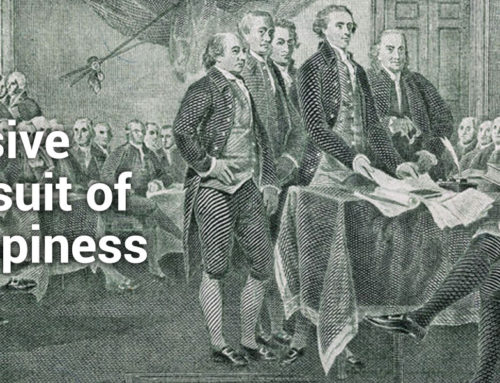
In a previous blogs (here,here, and here), we listed the universal attributes of coaching in building the trust of team members. Building trust requires integrity , behavior that is honest and consistent in words and actions; empathy, a genuine concern for the feelings and aspirations of others; and teaching skills, the desire to learn the talents and motivations of others and stimulate their self-learning.
Despite elegant strategies and rigid management processes, the performance of most organizations fails to meet expectations. Why is this so? From my own experience as an R&D Managing Director, I found the performance of the organizations that I managed dramatically improved when I stopped trying to “manage” direct reports and spent my time coaching them to improve their performance and manage their professional development. I have also seen in my consulting practice a direct relationship between effective coaching and organizational performance by supervisors at all levels. I have come to the conclusion that coaching is the missing ingredient in achieving high performance. If this is true, why isn’t it more widely practiced? I’ll give you my point of view below.
Most all organizations recognize the importance of supervising staff and have sophisticated annual performance planning and development programs in place. “Management by objectives (MBO)” has been proven to be one of the more powerful tools in management theory over the past 30-40 years when successfully practiced. Unfortunately, poor execution of the MBO process has many questioning its effectiveness. Most managers and staff oftentimes dread the annual performance review. However, when properly executed, the performance planning and review process is a highly effective way to balance the need for performance (what can you do for the organization?) with the need for personal accomplishment and growth (what can the organization do for you?).
The following list represents some of the more important reasons why the MBO process is not as effective as it could be. How much does this sound like your organization?
- The majority of the planning effort is spent on filling out forms rather than having meaningful dialog.
- The main focus is tops down on organizational objectives with little input from staff
- The selected performance goals are rarely SMART (specific, measurable, achievable, realistic, and timely)
- Staff aspirations and development goals are given lip service
- Performance goals are rarely reviewed more than once or twice a year
- Development goals are superficial oftentimes involving taking a training course
- Staff receive little support from management during the year in removing barriers to achieving their goals
In Mihaly Csikszentmihalyi’s excellent book Good Business –Leadership, Flow and the Making of Meaning , he lists the most important factors in determining high performance and staff satisfaction. These are clear goals, instant feedback, a match between difficulty and ability, and a sense of control. In order to meet these factors, good coaches do their homework. Matching the difficulty of assignments with the ability of staff requires you to spend time getting to know the strengths, weakness, aspirations and motivations of staff. The best coaches understand that an important part of their leadership responsibilities is placing their staff in positions to succeed, challenging them with meaningful assignments and supporting their development and growth. In a new relationship, the better one understands the aspirations of their staff, the more successful they will be in guiding staff assignments and development.
Coaching for Development
In coaching for development, the focus is on how the organization can meet the needs and aspirations of the employee. In most performance planning processes, staff development is an afterthought and rarely given much attention. I believe that this is one of the main reasons why organizations fail to reach their goals. In my opinion, the first priority in performance planning should not be determining performance objectives, but on the development process. High performance is achieved when staff is self-motivated and give 110% to achieving organizational goals. As stated above, staff are motivated by tailored performance goals that match and challenge their skills, control over the critical success factors, and instant feedback on their progress. It is nearly impossible to develop tailored performance goals unless sufficient time is spent getting to know the strengths, weakness, aspirations and motivations of staff. This can only be accomplished by starting with the needs and aspirations of the staff member.
Prior to discussing what an individual’s performance goals should be, begin by discussing staff development goals first. Before you even look at a form, have several conversations with staff to get to know them personally; their strengths, weaknesses, likes, dislikes, ambitions and constraints. Ask their advice on where they believe they can make the greatest contribution to the organization. Identify their career goals and realistically evaluate the probability of achieving those goals and the level of effort and timeframe required. Discuss both on the job assignments and extra-curricular activities that would support and advance their career objectives. This information will be invaluable when trying to align the organizational goals with individual staff expectations.
A big mistake often made in performance plans is to assume that one size fits all. Many managers justify this position by assuming the only fair process is to treat everyone equally. This is highly counterproductive. By getting to know staff really well, you can coach them toward specific assignments that emphasize their strengths and minimize their weaknesses. Think of the coaching role as similar to a talent agent in the entertainment industry. Great talent agents know their clients’ strengths and recommend only those roles where they know their clients can perform well.
Presented below are a few illustrative examples.
Allow staff to try branching out into new areas with some level of security. As an example, one of my high performing senior scientists was interested in a group leader management position but wasn’t sure whether this was right career path for him. We both agreed to give it a try and for him to assume the role and responsibility of the group leader position. This trial assignment was communicated broadly with the understanding that he had his choice to continue in the group leader role or return to the staff scientist/project manager role. At the end the year, having performed the group leader role admirably, he decided that he enjoyed technical project work much more and seamlessly moved back into a project leader role with no loss of face.
Exploit exceptional strengths for the benefit of both the organization and individual. As another example, one of my senior staff had a brilliant mind and extraordinary skill in experimental design, scientific interpretation of research and lucid report writing. However, his organizational and financial management skills prevented him from advancing in the organization where managing projects was a promotional requirement. We developed a performance plan for him focused on the role of principle investigator on multiple organizational projects, a role in which he excelled, and the projects benefited. By pairing him up with younger project managers, they had the opportunity to learn and be mentored in sound science. In time, he rose to the highest level on the technical ladder, research leader.
Have the courage to allow staff to change careers. Sometimes, staff performance deteriorates because staff feels stuck in a job that does not suit them despite their academic training and degree. They discover hidden talents after having worked in an organizational setting for a while and want to branch out and change careers. Instead of thinking that the development cost of a career change is too expensive for your organization, think of it as a good investment in an individual who has discovered not only his or her talent but also the motivation to excel. From personal experience, this can be an excellent return on investment. One example is a financial manager/contracting officer with an MBA who was stalled in his current position. He excelled at negotiations and building client relationships and preferred dealing with clients rather than back office work. I offered him a trial assignment for one year in marketing and business development in which he excelled. He went on to have many successful and enjoyable years in that role.
In another example, a very organized scientist with a high level of emotional intelligence, social skills, and maturity applied for a position in human resources despite having no background or education in that profession. We took a chance and gave her the assignment based on her talent as opposed to experience with a development goal of acquiring the necessary HR skills through training. She went on to be an outstanding HR professional and eventually became HR manager of the organization.
These examples are meant to illustrate the importance of investing in people; getting to know the talent and motivation of your staff and putting them in assignments where they can succeed. I can assure you that by developing and acting on this mindset, you will see an immediate and dramatic improvement in your staffs performance and enjoyment of their job.
Graffeo and Associates is an organization committed to improving the quality of leadership in science and technology (S&T). It was formed in 2008 around the expertise of Dr. Tony Graffeo, a senior executive from Arthur D. Little and Battelle Memorial Institute. Dr. Graffeo has consulted with leading research institutions in the United States, Europe, Latin America and the Middle East, and has created a codified system of leadership development centered around the principles of the Performance Trilogy® which he has taught throughout the world. He is currently a professor at Northeastern University teaching Professional Masters entrepreneurship and leadership courses. His new book, titled “Leading Science & Technology-Based Organizations: Mastering the Fundamentals of Personal, Managerial, and Executive Leadership” will be published in 2018.
Click here to obtain a copy of Graffeo & Associates Monthly Newsletter


